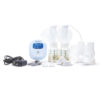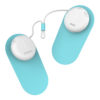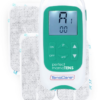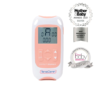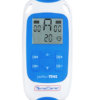What’s in the Bottle – From Nancy Morbacher ICBLC
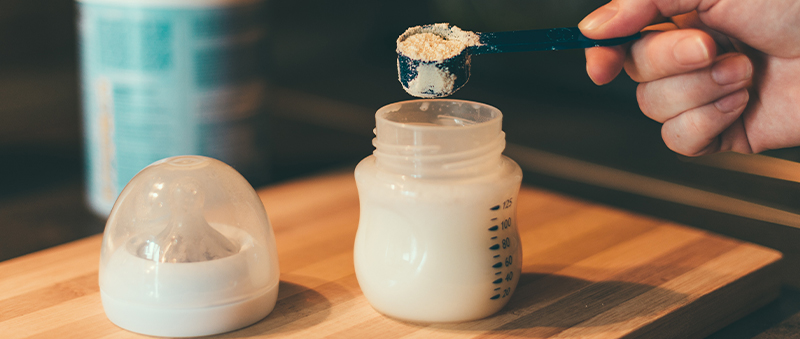
What’s in the Bottle – From Nancy Morbacher ICBLC
What’s In the Bottle?
The study mentioned above provides a partial answer. Caregivers’ behaviors during bottle-feeding—which are independent of the milk—influence babies’ intake. For example, when bottles contain more than 6 oz. (177 mL), babies consume more milk. Also, babies whose caregivers encourage them to finish the bottle are heavier than other babies.
An important part of obesity prevention is the ability to self-regulate what we eat to match our energy needs. Breastfeeding naturally teaches babies this self-regulation by giving them more control over feedings. While breastfeeding, baby must actively draw milk from the breast. He learns to take milk when hungry and stop when full. This helps baby become attuned to his body’s hunger and satisfaction cues. During bottle-feeding, baby’s role is more passive. Fast, consistent flow and regular coaxing to take more milk, even when full, can lead to a habit of overfeeding and poor self-regulation.
In one recent study of 1250 U.S. babies, researchers used bottle-emptying as a measure of poor infant self-regulation.3 (An earlier study verified this link.4) It didn’t matter whether expressed milk or formula was in the bottle. The more often the babies were fed by bottle during their first 6 months, the more likely they were to empty the bottle during their second 6 months. Only 27% of the babies who were exclusively breastfed during their first 6 months emptied the bottle during their second 6 months. Of those fed at first by both breast and bottle, 54% later emptied the bottle. Of those fed at first only by bottle, 68% later emptied it.
In a U.S. pilot study,5 weight gain was monitored for the first 4 months in 37 human-milk-fed babies. Nineteen were bottle-fed no more than once per day and 18 were bottle-fed significant amounts of expressed milk because their mothers were employed full time. Although the difference in weight gain between these groups was not statistically significant due to the small sample size, the differences were obvious. From 4 to 6 months of age 10% of the babies in the breastfeeding group were at or above the 85th percentile for weight, whereas 33% of those in the bottle-feeding group were at or above the 85th percentile.
Mother’s milk plays a vital role in a healthy beginning. But as these studies demonstrate, there is more to breastfeeding than the milk. Even when mother’s milk is in the bottle, regular bottle-feeding can increase a baby’s risk of childhood obesity.
References
1Dewey, K.G., Infant feeding and growth. In G. Goldberg, A. Prentice, P.A. Filtreau, S., & Simondon, K. (Eds.) Breastfeeding : Early influences on later health (pp. 57-66). New York, NY: Springer.
2Kramer, M. S., Guo, T., Platt, R. W., Vanilovich, I., Sevkovskaya, Z., Dzikovich, I., et al. Feeding effects on growth during infancy. Journal of Pediatrics 2004; 145(5): 600-605.
3 Li, R., Fein, S.B., & Grummer-Strawn, L. Do infant fed from bottles lack self-regulation of milk intake compared with directly breastfed infants? Pediatrics 2010; 125(6): e1386-e1393.
4Li, R., Fein, S.B., & Grummer-Strawn, L.M. Association of breastfeeding intensity and bottle-emptying behaviors at early infancy with infants’ risk for excess weight at late infancy. Pediatrics 2008; 122 Suppl 2: S77-S84.
1Dewey, K.G., Infant feeding and growth. In G. Goldberg, A. Prentice, P.A. Filtreau, S., & Simondon, K. (Eds.) Breastfeeding : Early influences on later health (pp. 57-66). New York, NY: Springer.
2Kramer, M. S., Guo, T., Platt, R. W., Vanilovich, I., Sevkovskaya, Z., Dzikovich, I., et al. Feeding effects on growth during infancy. Journal of Pediatrics 2004; 145(5): 600-605.
3 Li, R., Fein, S.B., & Grummer-Strawn, L. Do infant fed from bottles lack self-regulation of milk intake compared with directly breastfed infants? Pediatrics 2010; 125(6): e1386-e1393.
4Li, R., Fein, S.B., & Grummer-Strawn, L.M. Association of breastfeeding intensity and bottle-emptying behaviors at early infancy with infants’ risk for excess weight at late infancy. Pediatrics 2008; 122 Suppl 2: S77-S84.

